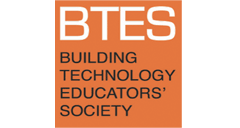Frei Otto’s Pneumatic Experiments for Humanitarian Design
Author ORCID Identifier
DOI
https://doi.org/10.7275/7x18-kd05
Abstract
This paper will explore the intersection of building technology and humanitarian design-science research by looking at Frei Otto’s pneumatic experiments. The purpose of the study is to contextualize our contemporary demands for humanitarian design work by reflecting upon the manner by which Otto integrated an ambitious design ideology with an elevated and innovative technical acumen. Constraining the investigation to Otto’s work, particularly his relatively unknown early work with pneus, provides a useful exploration of design-science approach that connect design and technology—an approach that is useful to understand for contemporary pedagogical applications.
Otto himself connected his career to humanitarian work. Shortly before his death in 2015, Frei Otto vowed to, “…use whatever time is left to me to keep doing what I have been doing, which is to help humanity.” The paper will explore the complicated manner by which Otto’s design and research contributed towards humanitarian design (or not), both in process and content. Although Otto’s desire to “build light and keep mobile” can be applicable for relief and recovery structures, he intended it more broadly. His operational ideology for lightweight structures sought to connect design, nature, and humanity; but his design-research work was intentionally acontextual. Instead of producing a particular product building, he explored a realm of structural typologies to determine how forms and construction could be leveraged to help address a myriad of other humanitarian issues. The work wasn’t intended explicitly to intervene in traditional humanitarian relief or recovery efforts.
However, at the earliest stages of his career, his book, Tensile Structures, Volume 1 (1962), Otto’s included hundreds of proposals for innovations in pneumatic structures, many that seemed explicitly created to address various humanitarian needs of food, water, infrastructure, and shelter for inhospitable locations. The paper will show the connections between the design intentions and technical explorations that led to this innovative pneumatic proposals (many as yet, unrealized). The manner by which the work was conceived and studied is relevant to our contemporary concerns in practice and pedagogy so the paper will concluded with observations and recommendations for connections that can be made.
Recommended Citation
Whitehead, Rob
(2021)
"Frei Otto’s Pneumatic Experiments for Humanitarian Design,"
Building Technology Educator's Society: Vol. 2021, Article 19.
DOI: https://doi.org/10.7275/7x18-kd05
Available at:
https://scholarworks.umass.edu/btes/vol2021/iss1/19

